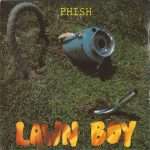Museo Rosenbach – Zarathustra (1973/2011)

Artist: Museo Rosenbach
Album: Zarathustra
Genre: Rock Progressivo Italiano
Label: Sony Music
Year Of Release: 1973/2011
Quality: FLAC (image+.cue)
Tracklist:
1. Zarathustra (20:49) :
– a. L’Ultimo Uomo
– b. Il Re Di Ieri
– c. Al Di La Del Bene E Del Male
– d. Superuomo
– e. Il Tempio Delle Clessidre
2. Degli Uomini (4:05)
3. Della Natura (8:31)
4. Dell’Eterno Ritorno (6:19)
Personnel:
– Stefano “Lupo” Galifi / vocals
– Enzo Merogno / guitar, vocals
– Pit Corradi / Mellotron, Hammond organ, vibraphone, Farfisa electric piano
– Alberto Moreno / bass, piano
– Giancarlo Golzi / drums, timpani, bells, vocals
“Zarathustra” is the debut studio album of Museo Rosenbach and was released in 1973. The line up on the album is Stefano “Lupo” Galifi, Enzo Merogno, Pit Corradi, Alberto Moreno and Giancarlo Golzi.
Everything really began when a group, initially named Inaugurazione Museo Rosenbach, was created around 1971 from the fusion of two late 60’s bands from Sanremo, La Quinta Strada and Il Sistema. Their first line up included the future Celeste’s member Leonardo Lagorio on sax and flute, and the future guitarist of Museo Rosenbach, Enzo Merogno. Sanremo’s groups, La Quinta Strada and Il Sistema, were two of the first Italian rock bands to spread prog rock in Italy.
Everytime that the name of Museo Rosenbach is pronounced, you can see a sparkle in the eyes of every European truly progressive rock fan. Their album “Zarathustra” is usually considered as one of the best examples of the genre to come from outside England. However, the band wasn’t successful at the time. They were accused of right-wing inclinations for the Mussolini image in the front cover collage on an all-black background and because Nietzsche inspired the lyrics. Both things contributed to limit the diffusion of their name and their album. So, it’s not strange that Museo Rosenbach had a very short life, splitting soon after their album “Zarathustra” and some good live concerts in the summer of 1973.
“Zarathustra” is, undoubtedly, one of the most impressive Italian prog rock albums ever, with an astonishing blend of hard and symphonic progressive rock. It’s still a perfect example of the Italian powerful idiosyncratic musical creativity. It’s not hard to understand why this is regarded as one of the best albums of the Italian prog rock scene. This is symphonic prog rock with a rough edge, but without becoming too much heavy progressive. The arrangements are heavily loaded with Mellotron, organ, piano, aggressive guitar and furious drumming. Everything is amazingly played. The compositions are flawless. This is a complex album with many time changes, something that happens all the time.
Though the music is generally dark and heavy, it still manages to remain melodic and fluid. The traditional rock ensemble of electric guitar, bass and drums has plenty to offer, with the Mellotron and Hammond organ capable of taking on both lead and supporting roles. The continually captivating interplay is a result of wicked distorted electric guitar, varied and beautifully arranged keyboards, a versatile rhythm section and strong expressive Italian vocals. Stefano Lupo Galifi’s singing is bold and passionate, elevating the rest of the music to a higher level. It all comes together in a constant tension, topped by the majestic outbursts of Mellotron, which is the main hallmark of the album.
In the original vinyl version, side A was entirely occupied by the long “Zarathustra” suite, consisting of five parts with the duration of about twenty minutes. “L’Ultimo Uomo” is the segment that opens the album between solemn and emphatic sounds and King Crimson’s solutions. Hammond, piano and Mellotron introduce “Il Re Di Ieri”, the second chapter of “Zarathustra” in which Museum Rosenbach manages to blend the symphony of the early King Crimson with the darker sounds of the Italian prog. “Al Di La Del Bene E Del Male”, is a song that deepens and expands the prog demands of the band. “Superuomo” is the most changeable episode of the all “Zarathustra” suite. The fifth and final chapter, “Il Tempio Delle Clessidre”, returns to the final theme of “L’Ultimo Uomo”, a pompous and grand instrumental.
The three other tracks on the album maintain the same high standard. “Degli Uomini” opens the B side of the vinyl. The initial Mellotron foreshadows the violent attack by Merogno’s riffs, who contend for the scene at Corradi’s Hammond and Golzi’s battery pyrotechnics. “Della Natura” moves to a more jazz rock territory, with Hammond, Mellotron and guitar always in evidence with the rhythmic section, with Moreno’s pulsating and nervous bass to underline the frenetic drumming of Golzi and where Galifi softens the atmosphere for a few moments before the usual jazz rock assaults. The equally beautiful “Dell’Eterno Ritorno” closes the album, an eclectic prog track with the typical Mediterranean sound.
Conclusion: There are so many outstanding melodies and themes on this album that it’s not without reason that “Zarathustra” is considered one of the milestones in the Italian prog rock of the 70’s. The band had dedicated itself to the powerful and rocking version of symphonic rock music, where they managed the balancing act from rough, hard rock to more intellectually shaped, complex rock with flying colors. In fact, it’s almost a definitive example. Here you have the big keyboards, organ and Mellotron, a passionate and strong vocalist, a drummer who’s clearly a jazzer and compositions that are both dramatic and rocking at once. Hardly any other work can develop such a harmony between hard guitar riffs and soft Mellotron carpets. Wrap it up in one of the finest covers of the era and you have a perfect package. “Zarathustra” is, undoubtedly, one of the universally recognized masterpieces of the Italian prog rock scene.
Review by e210013, sputnikmusic.com



